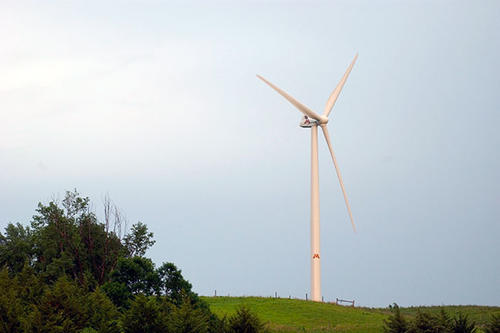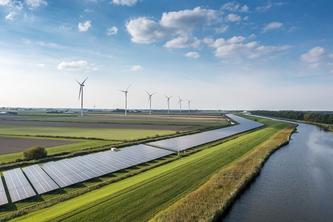Research identifies Midwest’s energy line expansion as model for regional planning, key in addressing climate change

Collaborative partnerships are helping to usher in a new era of energy planning, according to analysis released by researchers at the University of Minnesota’s Humphrey School of Public Affairs. The report tells the story of CapX2020, a coalition of eleven utilities from Minnesota and the Upper Midwest that worked together to plan, develop and build the region’s first major energy line expansion in 40 years.
The first regional utility partnership of its kind, the CapX2020 group (short for “Capacity Expansion Needed by 2020”) was formed in 2004 to construct high-voltage transmission lines necessary to replace aging infrastructure, meet growing electricity demand, and comply with mandates to incorporate renewable energy and reduce carbon pollution. The $2.1 billion dollar project is designed to accommodate the region’s energy needs for the next 30 to 50 years with 800 miles of new high-voltage power lines installed in Minnesota, North Dakota, South Dakota and Wisconsin. The lines allow space for future solar or wind farms to connect to the energy grid.
“Transmission development is a critical, yet notoriously challenging component of decarbonizing the energy system,” said Elizabeth Wilson, professor of energy and environmental policy and law at the Humphrey School and Institute on the Environment fellow. “The coordinated CapX2020 efforts across several states are at the forefront of energy system planning evolution in the United States.”
The Humphrey School report, “Transmission Planning and CapX2020: Building trust to build regional transmission systems,” investigates how the CapX2020 group developed a shared vision and aligned around a common goal. Researchers found that the project created a beneficial situation for all participants, fostered deep relationships, developed a system of group governance to operationalize their work, and engaged with stakeholders with openness and transparency. Wilson and her research team interviewed 32 utility employees, state and federal utility regulatory commissioners, industry representatives, lawyers, and landowners who were directly involved with or impacted by the project.
“What was most surprising to me was the level of outreach and engagement that this group had with all parties involved,” said Marta Monti, the Humphrey School’s lead research associate for the project. “Public engagement was key and the level at which the utilities engaged with landowners directly impacted by the project was unprecedented. The personal and institutional collaboration necessary to enable a project this size is incredibly impressive.”
This is the first major study to examine this utility partnership model, and address whether necessary change is happening that allows utilities, regulators, and policy makers to work collaboratively on next-generation energy systems. These processes are vital to implementing Minnesota’s Renewable Energy Standard, which requires utilities to provide 25% of their total electrical generation from renewable sources by 2025, and the new federal Clean Power Plan finalized in 2015 to help reduce carbon pollution from power plants.
The group of eleven utilities was comprised of participants who had different business models that they needed to align. Researchers concluded that the parties involved set an example of how differently structured utilities can collaborate on large-scale infrastructure projects¾one that should be replicated in other parts of the country. The utilities include: Central Minnesota Municipal Power Agency, Dairyland Power Cooperative, Great River Energy, Minnesota Power, Minnekota Power Cooperative, Missouri River Energy Services, Otter Tail Power, Rochester Public Utilities, Southern Minnesota Municipal Power Agency, WPPI Energy and Xcel Energy.
The Humphrey School of Public Affairs will host a U.S. Department of Energy (DOE) workshop on the Grid Modernization Initiative on May 9 and 10. The workshop, open to industry stakeholders and free to attend, is one of six regional DOE workshops scheduled this spring. More information can be found at smartgrid.gov/GMI_workshops.
The Humphrey School of Public Affairs at the University of Minnesota is one of the country’s top-ranked professional public policy and planning schools. The School is long noted for equipping students to play key roles in public life at the local, state, national, and global level and offers five distinctive master’s degrees, a doctoral degree, and four certificate programs. www.hhh.umn.edu.
- Categories:
- Agriculture and Environment





